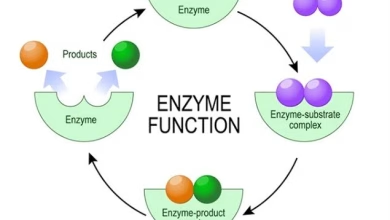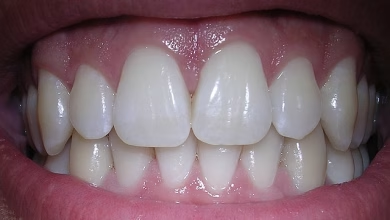
2ND TERM SS3 DATA PROCESSING EXAMINATION QUESTIONS
We have provided questions for teachers who are looking for questions to set for their respective students. These questions are based on their scheme of work, specifically the 2nd Term scheme of work. While this may not cover all topics, selected ones have been set. More are coming soon. Also, the objective questions are drawn from WAEC past questions from random years. The theory questions have been set with scores assigned to them. Easy, isn’t it? Keep checking for more, and send us an email if you’d like us to create one for you.
DATA PROCESSING 1 OBJECTIVE TEST QUESTIONS
1. One characteristic feature of the second generation computers is the presence of
A. vacuum tubes
B. transistors
C. micro-chips
D. integrated circuit
2. Convert 4 base ten to a number in base two.
A. 10
B. 1
C. 100
D. 10
3. Data processed into its useful form is referred to as
A. unique data
B. raw data
C. knowledge
D. information
4. Which of the following is an example of qualitative data?
A. Colour
B. Height
C. Length
D. Shoe size
5. Which of the following is not a characteristic of a personal computer?
A. Automation
B. Complex
C. Digital
D. High speed
6. Magnetic Ink Character Recognition (MICR) is used to read codes on
A. postal orders
B. examination answer sheets
C. bank tellers
D. bank cheques
WAEC DATA PROCESSING PAST QUESTIONS WITH ANSWERS
7. The gap between ownership, access, and benefits from computers and their applications is termed
A. separation
B. divide
C. deprivation
D. annihilation
8. The device that sends information to the CPU is the
A. input device
B. output device
C. processor
D. collation
9. The assembling of data according to a predetermined order is known as
A. collation
B. interpretation
C. organization
D. summarization
10. Which of the following is not a procedure for information processing?
A. Segregation
B. Organization
C. Interpretation
D. Collation
11. Information transmission medium from location P to location Q in space is called
A. wireless transmission
B. wired transmission
C. cabled transmission
D. asynchronous transmission
12. Which of the following is not a type of wireless transmission?
A. Bluetooth
B. Fibre optic
C. Infrared
D. WiFi
13. The basic criterion for classifying a network is
A. psychological consideration
B. geographical scope
C. equipment availability
D. economic reason
14. Which of the following measures are used to secure data online?
I. Password
II. Encryption
III. Personal Identification Number (PIN)
A. II only
B. III only
C. II and III only
D. I, II, and III
15. In email context, “bcc” stands for
A. backup carbon copy
B. blank carbon copy
C. blind carbon copy
D. bulk carbon copy
16. An internet-based system that allows people of different geographical locations to have in-person meetings is known as
A. voice messaging system
B. video conferencing system
C. online mailing system
D. fax system
17. The following software programs coordinate and control all other computer programs, hardware, and users’ actions except
A. ZENITH
B. UNIX
C. DOS
D. DBMS
18. In Word processing applications, the symbols **B**, *I*, and <u>U</u> are commonly used buttons found on the
A. standard toolbar
B. menu bar
C. formatting toolbar
D. drawing toolbar
19. Bola intends to evoke the synonym of a certain word during Word processing. What is the most appropriate tool to use?
A. Assistant
B. Change case
C. Grammar checker
D. Thesaurus
20. In a worksheet, which of the following actions would select non-contiguous cells?
A. Holding down the Shift key
B. Holding down the Ctrl key
C. Holding down the Alt key
D. Holding down Ctrl+Shift key
21. Which of these formulas will not be executed in MS Excel?
A. =SUM(examscore)
B. -SUM(Examscore)-12
C. =SUM(exam score)*8
D. =SUM(exam score)/3
22. MS Access is an example of a
A. relational model
B. network model
C. hierarchical model
D. flat file model
23. When a database recovery manager is invoked after a crash, restart proceeds in the following three phases:
I. Undo
II. Redo
III. Analysis
Arrange these phases in the right order.
A. I, II, III
B. I, III, II
C. III, II, I
D. I, II, II
24. During a presentation, slide transition can be activated by
A. right-click
B. mouse drag
C. mouse click
D. double-click
25. Planning and creating websites is called web
A. analysis
B. design
C. maintenance
D. publishing
26. Magazines and brochures can be produced using
A. data processing software
B. graphics software
C. presentation software
D. web authoring software
27. Which of the following is one of the tools used to maintain the computer?
A. Blower
B. Calliper
C. Cotton wool
D. Kerosine
28. Which of the following is not a good computer maintenance practice?
A. Blowing the system unit with a blower
B. Blowing the keyboard with a blower
C. Cleaning the screen with a wet cloth
D. Cleaning the CD-ROM drive with lens cleaner
29. Which of the following is not allowed in the computer laboratory?
A. Eating in the computer laboratory
B. Authorized persons only
C. Following best practices
D. Following rules or methods
30. Accepted practices, rules, or methods in computing are called
A. Conventions
B. Habits
C. Protocols
D. Standards
DATA PROCESSING THEORY SECTION B
Attempt to any 3 questions of your choice.
Question 1 (10 marks)
a) Define Networking. (2 marks)
b) State four benefits of Networking. (4 marks)
c) Differentiate between intranet and extranet. (4 marks)
Question 2 (10 marks)
a) What is a computer virus? (2 marks)
b) List five types of computer viruses. (5 marks)
c) Mention six examples of computer viruses. (3 marks)
Question 3 (10 marks)
a) State one difference between a computer professional and a computer user. (2 marks)
b) List five computer professionals and explain their primary functions. (5 marks)
c) What are five qualities of a good computer professional? (3 marks)
Question 4 (10 marks)
a) Explain the concept of a distributed database. (3 marks)
b) List and explain the two major types of distributed databases. (4 marks)
c) State the two concepts of data storage in a distributed database. (3 marks)


